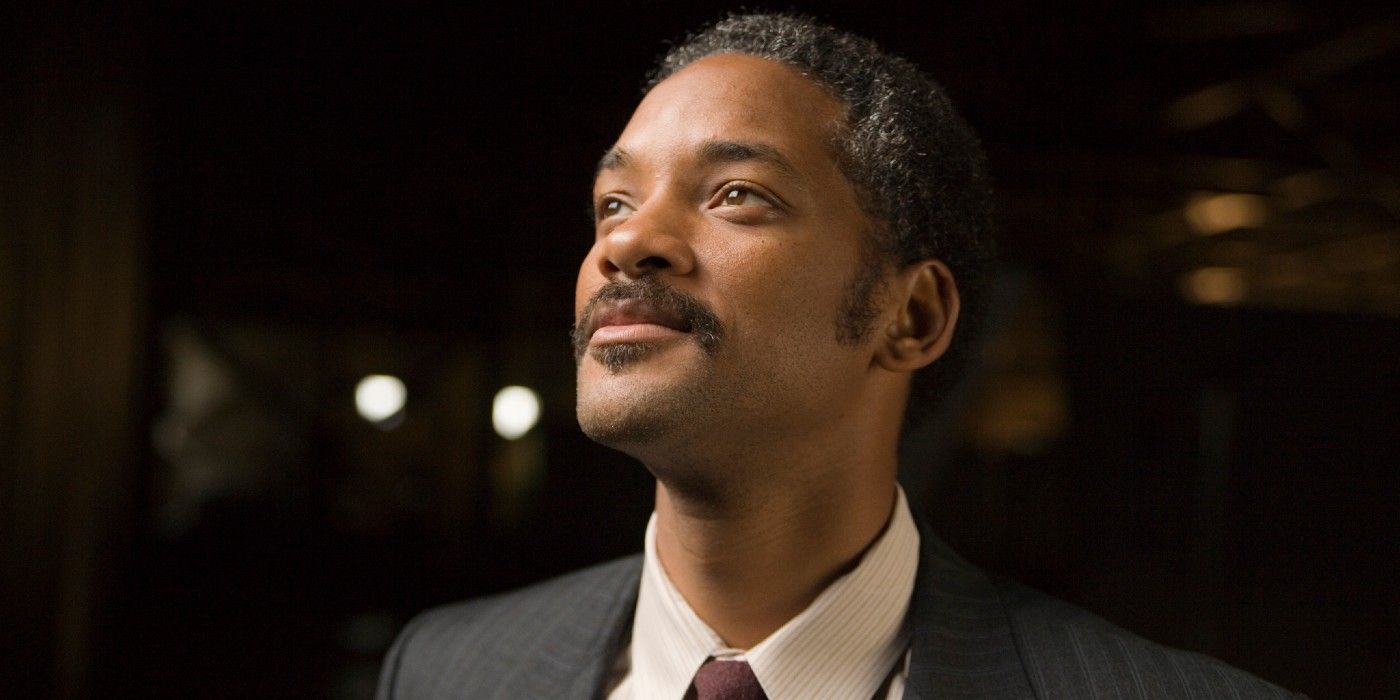Everyone loves a movie that is based on a true story. Somehow knowing that the events on screen occurred can lend a more poignant tone and relatable element. Yet, often, filmmakers have a loose definition of "based on a true story."
Of course, a movie can't recreate a real-life event with exact accuracy. Sometimes embellishment of the truth is just what a movie needs to make it cinematic. In some cases, it works, but in others, a movie would have been better off sticking to the facts.
"Sanka" and "Yul" From Cool Runnings Didn't Exist
Everyone knows the funny and charming Disney movie Cool Runnings, ostensibly about the first Jamaican Bobsled team. It's allegedly a true story about a group of Jamaican sprinters who overcome adversity to gain respect and become champions of the Winter Olympics.
The 1988 Winter Olympics did see the arrival of the first Jamaican bobsled team, but that's about where the similarities between the movie and real-life end. The film wholly invented the characters and their lives. Much of the "adversity" the team faced is fabricated— for example, the movie shows the unit being unused to frigid conditions. The winter was very warm, with some daytime temperatures reaching 60 degrees Fahrenheit.
John Nash in A Beautiful Mind Didn't Hallucinate His Roommate
A Beautiful Mind has been praised for its compelling storyline and sensitive handling and representation of mental illness. It's also known for featuring one of the most dramatic plot twists in popular film and won multiple Academy Awards.
The movie garners criticism for is its lack of adherence to actual events. While John Nash did have debilitating schizophrenia, he never actually had visual hallucinations, let alone imaginary fabrications of entire people for years on end.
Will Murdoch from Titanic Was a Hero
Titanic is perhaps one of the most famous movies ever made. It's a thrilling watch due to both a blossoming young romance and an impending life-or-death disaster. Audiences generally know that the couple, Jack and Rose, were not real people on the ship, but the story of the actual shipwreck is supposed to be true history.
There are many accurate aspects to the movie, but some are over-dramatizations. One of the most chilling scenes shows the lower class passengers locked behind gates with no chance to escape, which didn't happen. Also, officer Will Murdoch is portrayed as a villain who shoots an innocent passenger and then kills himself. In reality, Murdoch was a hero who saved many lives in the incident.
Despite The Theory Of Everything, Stephen Hawking Was Not Very Nice
The Theory of Everything tells the story of physicist Stephen Hawking. It is based on a memoir written by Hawking's wife and chronicles Hawking's life as he deals with chronic illness as a prominent physician.
Even though the movie comes out of events portrayed in an actual biography, it still strays noticeably from real-life events. The main difference is in the personality of Hawking, which the film portrays as charming and kind. In reality, his wife and friends claim that he could be very critical and rude. His wife writes that he "had no compunction in monopolizing the conversation at parties with his controversial opinions."
Alan Turing's Homosexuality Was a Bigger Deal Than The Imitation Game Made It Out To Be
Benedict Cumberbatch plays Alan Turing in The Imitation Game, which tells the story of Turing designing a machine that could crack the German military's secret code during WWII.
While the main events in the film are more or less historically accurate, some aspects are not. In contrast to Stephen Hawking, Turing appears to have been more personable and pleasant than portrayed onscreen. The movie also underplays his homosexuality, a massive obstacle in his real life.
Steve Jobs Was Nicer In Reality
Following in the familiar vein of biopics about eccentric geniuses who changed the world, Steve Jobs is based on a biography about the man himself. The film has received accolades for its acting and production.
Steve Jobs's real-life business partner Steve Wozniak has been publicly critical of the filmmakers' liberties regarding the actual history. Most of Jobs's altercations with coworkers in the film never happened. Like Alan Turing, Jobs was a much more sympathetic person in real life.
Pocahontas was Ten When She Met John Smith
A classic Disney animated film, Pocahontas depicts a romance between John Smith and the title character while retelling the story of English colonization in modern-day Virginia where the Powhatan tribe was living.
Of course, this is an animated Disney film meant for children, so it is bound to take some historical liberties. Still, some deviations from fact are more than audiences might expect. Pocahontas was a person, but "Pocahontas" wasn't even her real name (it was Matoaka). Also, though John Smith was a real person who knew Matoaka, there was no romantic relationship between the two — Matoaka would have been ten years old when they met.
The Pursuit of Happyness' Chris Gardner's Struggles Were More Complex
In The Pursuit of Happyness, Chris Gardner struggles with homelessness while looking after his infant son. He does this while working tirelessly to gain a well-paying job eventually. The movie is known for starring Will Smith and his actual son Jaden, lending the two costars uniquely authentic chemistry.
In all fairness, the story that the movie is based on is just as miraculous. Still, some creative liberties were taken. Gardner's actual son was only two years old instead of five while they were homeless. There were also some personal complications omitted from the film. For instance, the kid spent four months with his mother while Gardner was working, and there was a time when Gardner was selling drugs to get by.
Michael Oher from The Blind Side Was Always A Good Football Player
The Blind Side is an inspiring rags-to-riches story about eventual NFL player Michael Oher. It was generally well-received and was nominated for an Academy Award.
Michael Oher eventually wrote an autobiography wherein he criticized the movie's retelling of his story. The film unfairly depicts Oher as unintelligent, but actually, Oher writes, he was just "a kid who had never had consistent academic instruction," growing up with a scarcity of resources. It also shows Oher's adoptive family basically as saviors of Oher, teaching him how to play football, while in reality, he was a good player throughout childhood.
The Five Points Neighborhood Of Gangs of New York Was Just As Dangerous As Anywhere Else in New York
Gangs of New York deals with (you guessed it) a group of gangs in New York City in the mid-1800s. The critical conflict is a period of violence between gangs over a territory dispute due to a Catholic-Protestant rivalry.
While the film is supposed to be a true-to-history period piece, in reality, many aspects were exaggerated. The movie shows the Five Points neighborhood of New York as an exceedingly violent place, but in reality, it was no more dangerous than any other part of the city. Also, while some are true-to-life, many of the characters are entirely invented.

-7.jpg)
-13.jpg)
-14.jpg)
-9.jpg)
-7.jpg)
-9.jpg)
-8.jpg)


-18.jpg)
.jpg)